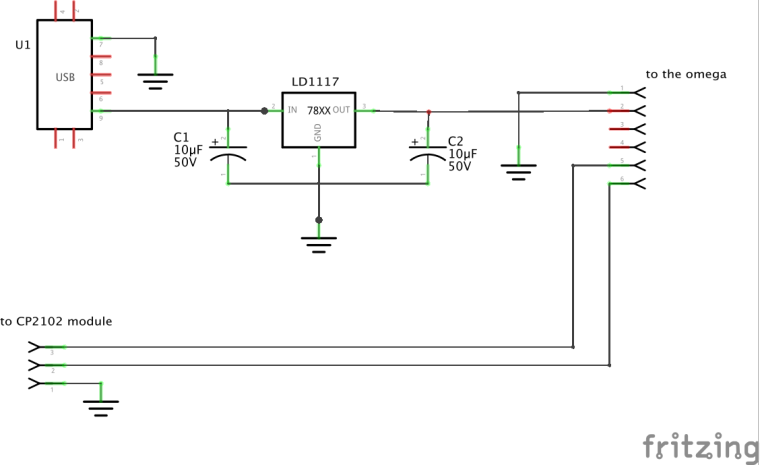Omega2 stopped working, insanely hot to the touch
-
To conform to guidelines:
• Take a look at our list of resolved issues: no resolved issues containing "hot" in the title
no resolved issues containing "hot" in the title
• Have you followed our setup guide: Yes, I was following Powering with No Dock
Yes, I was following Powering with No Dock
• Have you checked different USB cables/ports/power supplies? I have several other LD1117 which has currently working fine with devices load on them.
I have several other LD1117 which has currently working fine with devices load on them.I recently made my one of my onion omegas to be an IoT server using Blynk.cc and when some actual sensors were developed and started working, after about 10h of uptime I stopped receiving new data. Unfortunately I wasn't at home so could not quickly check it.
When I arrived back home, I still saw a solid led so I thought it's working and tried to debug my esp8266 boards, but after a while I came to a conclusion they are fine and suddenly I realised there is no iot wifi anymore. I could not login to ssh, so I decided to reboot the omega. However, after I disconnected and reconnected my omega, it didn't come with a led, I immediately decided to check the connection and accidentally touched the omega shielding and it was very hot. Just after that I disconnected it.
However, I still see steady 3.29V coming out of my LD1117 and I'm pretty sure it's fine. In fact, omega 2 is three layers of power supplies away from 220V electricity network: first is 12V power supply of my home router, then it's 5V power supply for usb, then LD1117 regulating it to 3.3V and I never had any issue with this usb port before, so I guess my power supply are fine. I also checked other LD1117 I have – I have same result.
As recommended in ticket 16419, I tried connecting to the Serial port but see literally nothing. I pretty sure there is short to ground somewhere inside shielding of the omega: I just noticed that LD1117 starts getting hot when omega connected and also a hissing sound from omega.
On the photo you can see the CP2102 UART to USB converter module which was set up after the failure. Also you can see LD1117 3.3V regulator with two capacitors, as recommended in it's datasheet. Regulator was tested before use (it still does work).
Nothing is connected to the other sized of the omega.Some pictures required:
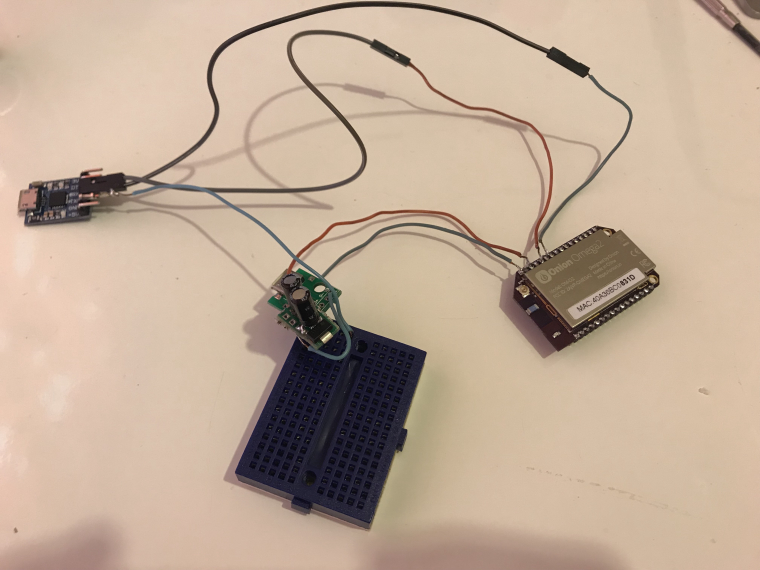
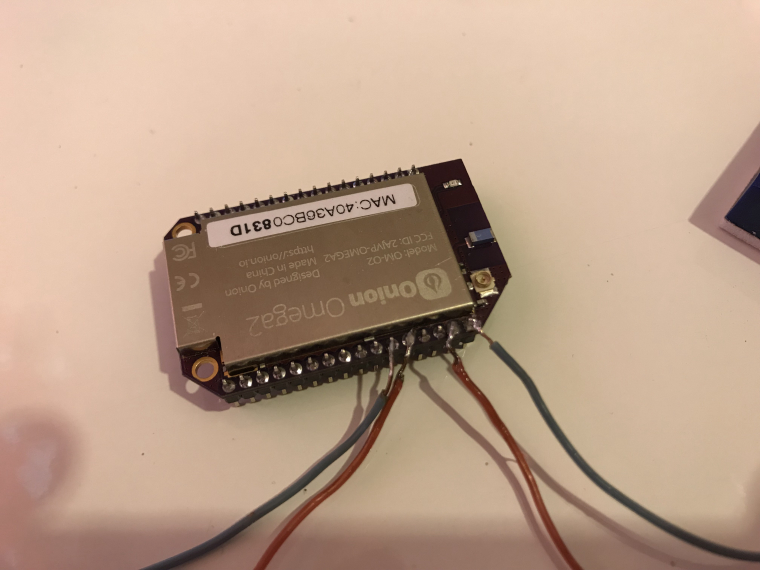
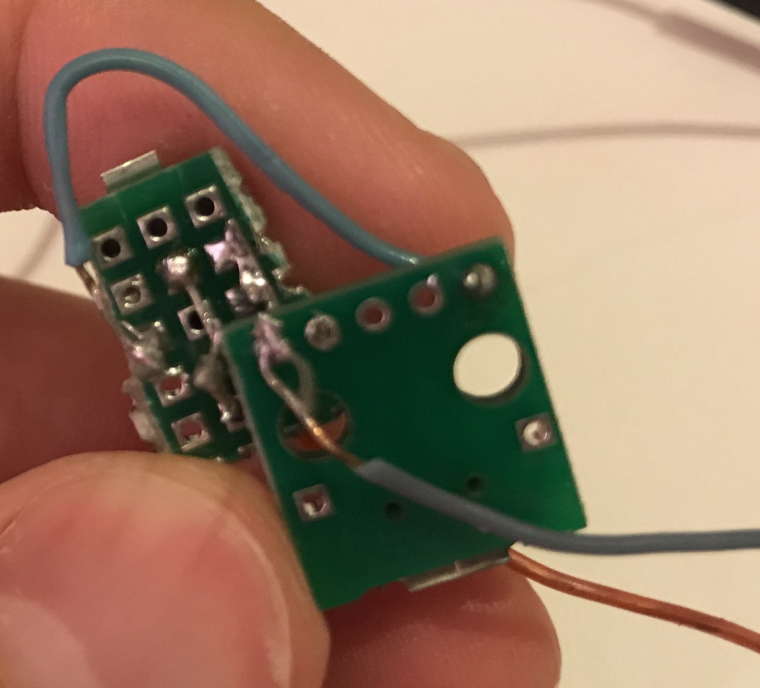
So, I guess I have [probably] dead omega now, just a day after it was set up. Generally there are two questions now:
- what do you think went wrong? is there anything I can do to ensure another omega will work fine?
- what else can you recommend to me? maybe there is a way to diagnose and replace something on the board to get it working again?
-
@Serg-Bu This type of damage is typically due to ESD, overvoltage, reverse voltage, or the presence of an I/O voltage when there is no supply.
That said, your wiring is quite suspect.
The best lesson to learn from this - no matter what the actual cause of this particular incident, is to improve your practices for next time. Use crimp connectors rather than soldering to module pins with the wire insulation melting back like that.
And use proper physical construction of a properly sized regulator. The one you are using is both physically too small for the power level involved (you want the DPAK or TO-220 type packages) and entirely lacking the required heatsink, even in the minimal form of the tab being soldered to a large copper pour.
-
@Serg-Bu
Unfortunately you have got a most probably dead Omega2 - I think.@Chris-Stratton said everything about your SOT-223 voltage regulator's missing copper thermal pad. Onion has suggested TO-220 case which has got definitely lower junction to ambient thermal resistance without any heatsink.
Please say something about the Omega-sensors connections and how were the sensors powered. (Some pictures required.

I agree with Chris - when the voltage regulator's thermal shutdown switched its output voltage off - perhaps Omega was "back powered" by those sensors.
-
@Chris-Stratton hey, I find it neither, as you say, horrible nor suspicious in the wiring. Melted insulation has nothing in common with soldering to this omega – these wires are only used (and reused) on the breadboard, I can't even recall when it actually melted, probably many years ago. Believe me, I have no problems soldering LQFP64 0.5 at as cold as 200C. I see no reason to throw these wires just because there is some insulation melted.
I also find it very unlikely to have voltage suddenly reversed, as well as presence of ESD, overvoltage or even an I/O voltage without supply – I simply had nothing connected to the omega except power supply before it get dead. Router has no sign of reset happened, nor my other electronics sensed any spike in the network. Moreover, there were nobody at home who could touch the device.
According to the datasheet, SOT-223 is fine, it can handle even 1W and still stay within operating range of up to +125C. But mine is soldered and laying flat on the board, so this gives a little more of dissipation. Do you think DPAK can handle better? I see it has almost identical thermal resistance as SOT-223.
I just checked on my another omega2, LD1117 is getting somewhat hot, but I can hold my finger without any discomfort. Amperemeter shows 0.1-0.2A current draw, thus according to datasheet without any heatsink this should be from 36C to 72C of heat. I also checked serial connection, worked fine on second omega, booted up in exactly 27 seconds. Dead omega draws 0.3A and emits nothing to the serial.
@György-Farkas omega has nothing to do with the sensors I mentioned in the first post – they are esp8266 modules connected via wifi to the omega.
@Chris-Stratton @György-Farkas Are you an Onion Corporation employees or do you have rights to act on behald of the Onion Corporation? If yes, is this an official response?
-
@Serg-Bu said in Omega2 stopped working, insanely hot to the touch:
omega has nothing to do with the sensors I mentioned in the first post – they are esp8266 modules connected via wifi to the omega.
What a pity! The 'back powering' seemed so logical
Are you an Onion Corporation employees or do you have rights to act on behald of the Onion Corporation? If yes, is this an official response?
I am an infinitely curious outsider only.
You can read about the official procedure here and about the 'Help Desk ticket' here - I think.
-
Added some more pictures as requested in ticket 16582.
When omega failed, it was connected like this – nothing more was connected.
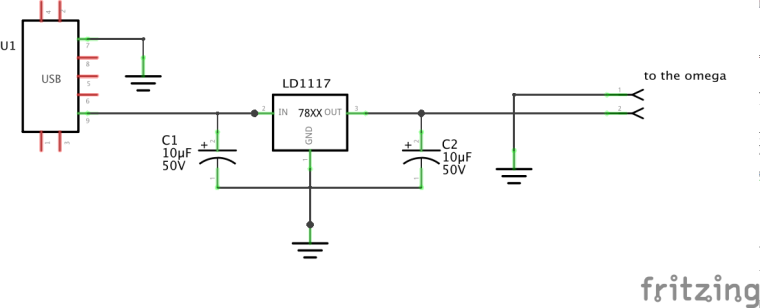
Later on, as recommended in ticket 16419, serial connection was added to the header pins 5 & 6 (GPIO 13 & 12) and I'm sure I wired it correctly because I checked on other omega I have and I saw omega ASCII art and the kernel loading:
